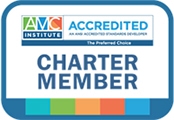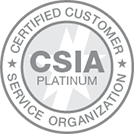In my roles as executive director for a national trade association and an industry segment leader overseeing a diverse array of associations and professional societies, I travel a lot. Almost weekly, in fact, and most typically by air.

Recently, as I sat in an airport lounge suffering through a three-hour flight delay, I began to ponder the value of all this travel. Do the costs, both monetary and in lost efficiency, justify the benefits? Since in this modern era both my laptop and wifi are always readily accessible, I decided to do a bit of research on the question.
Business blogger Stephen Gobeli reminds us that the time used must be calculated from departure to arrival and back again. “The two-hour meeting that you attended may have been very productive, but was it worth the entire two business days of work time (including travel) that were invested in it for you to attend?”
Gobeli assists us in answering this question by making a distinction between customer, client, or member meetings, which are precious and valuable, and internal meetings, which occur frequently and can often be handled effectively via a conference call. He concludes that customer contact is the primary, if not only, reason a person should travel on business.

Similarly, Modest Money states that, “despite useful technological advances such as Skype and FaceTime, business relationships are still founded on human interaction and rapport. Interfacing continues to be regarded as the best way to gauge the intentions, character, and spirit of a potential business associate.”
In the Entrepreneur article “6 Ways to Make Your Next Business Trip More Productive” a research article is referenced stating that companies have higher productivity expectations from business travelers than ever before and the advice is given to prioritize travel that involves making new connections.
Finally, Time Management Ninja says face-to-face is best for the following five reasons:
- Body Langauge is Communication — We tend to forget that body langauge plays a major part in our communication. It is not just how you said something, but also your facial expressions and body posture. This is lost in a phone conversation.
- Ensures Engagement — Who knows what people are doing while on conference calls (you might not want to know). However, face-to-face leads to engagement. It ensures that people are “in the conversation.” I was on a video call with an executive one day, when I suddenly stopped the call. The VP had leaned over and was having a separate conversation with his assistant. When he turned around, he apologized, “Oh, I guess you could see that.”
- Clarifies Meaning — Conference calls can lead to misunderstandings, either due to lack of communication (See No. 1) or simply because the medium is not conducive to individuals asking for better meaning. It’s much harder to raise your hand on a call than it is in person.
- Drives Participation — When you are all in the same room, it encourages people to participate. You can’t just go sit in the corner and turn your back to the meeting. Yet, this is exactly what many people do on conference calls.
- More Efficient — Face-to-face meetings tend to be shorter than conference calls. On the phone, everyone sits around on mute waiting for the discussion to end. Yes, this can happen in a meeting room. However, in face-to-face situations there is a greater pressure to get to the point.
So what does all this mean for association staff and volunteer leaders? For board meetings in particular, where strategic direction is determined and the participants do not interact regularly outside the meeting, it is worth the time and effort to make these meetings face-to-face whenever possible.
When exploratory, complex, or controversial items are on the agenda, the need for face-to-face dialogue is heightened. The time spent, and relationships forged both during the meeting and during the breaks and down time, will benefit both the organization and the attendees.

So pack your bags and your laptop and hope for no flight delays!




